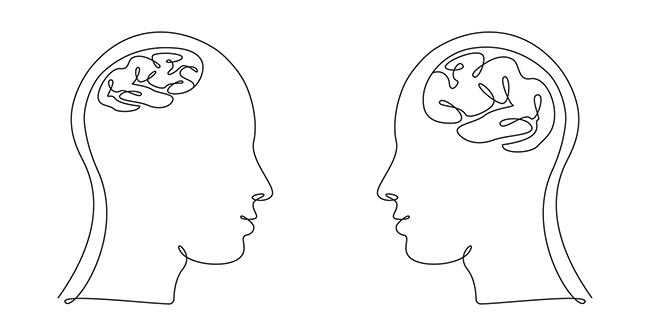 VOLUME 26, ISSUE 1 • March 2022. Full issue »
VOLUME 26, ISSUE 1 • March 2022. Full issue »


Top Review Article, Movement Disorders
MDS Criteria for the Diagnosis of Multiple System Atrophy
Share this:Tweet
Since its publication in 2008 the second consensus criteria1 was the gold standard for the diagnosis of multiple system atrophy (MSA). But the criteria has poor sensitivity in early disease stages2 and suboptimal accuracy.3,4 These shortcomings prevent proper counseling, enrollement in clinical trials of potential disease-modifying drugs, and the validation of diagnostic markers.5
Attemptying to improve on the second consensus criteria, the MDS MSA Study Group (MoDiMSA-SG) took a close look to identify specific shortcomings.5 Then, a Task Force within MDS conducted the development process that resulted in a novel MDS MSA criteria. Systematic literature review of clinical and laboratory features relevant for MSA diagnosis and consensus process including two Delphi rounds, an open survey for all MDS membership and Virtual Consensus Conference were used to develop and optimize the new MDS MSA criteria.
The MDS MSA criteria are designed for clinical practice, for the inclusion of patients in clinical trials, and for research purposes. It has four levels of diagnostic accuracy: neuropathologically established MSA, clinically established MSA, clinically probable MSA and possible prodromal MSA. Clinically established MSA provides maximum specificity with acceptable sensitivity, clinically probable MSA allows balanced sensitivity and specificity, while a new research category of possible prodromal MSA has low specificity.
Clinically established and clinically probable MSA require a combination of core clinical features (autonomic failure, parkinsonism and cerebellar syndrome), supportive motor and non-motor features (previously termed red flags), brain MRI findings and an absence of exclusion criteria. Division into motor phenotypes of MSA-parkinsonian (MSA-P) and MSA-cerebellar (MSA-C) remains unchanged. Core clinical features of clinically probable MSA are more sensitive and usually manifest earlier compared to the core features of clinically established MSA (see bold in table). While autonomic failure is a mandatory criterion for clinically established MSA diagnosis, at least two of autonomic failure, parkinsonism and cerebellar syndrome in any combination, including parinsonisam and ataxia without autonomic failure, allow for the diagnosis of clinically probable MSA. Clinically established MSA requires one brain MRI marker of atrophy or diffusivity changes in the putamen or infratentorial structures suggestive of MSA, while no MRI markers are required for the diagnosis of clinically probable MSA (Table 1).

Possible prodromal MSA is a research category designed to capture patients at their early disease stage. Patients in this category are those with isolated autonomic failure and REM sleep behavior disorder, subtle motor signs and an absence of exclusion criteria (Table 2).
Most supportive biomarkers were not included in the new criteria due to their still limited availability and a need for validation. However, we encourage clinicians to investigate their presence in patients with all MSA categories whenever available so that more data will be available in the future. These include brain MRI markers (for possible prodromal MSA), brain FDG-PET markers, normal cardiac 123 I-MIBG-scintigraphy, polysomnography proven REM sleep behavior disorder (for clinically established and clinically probable MSA), supine plasma norepinephrine level >100 pg/ml associated with neurogenic orthostatic hypotension, detrusor hyperactivity with impaired contraction or detrusor sphincter dyssynergia on urodynamic testing and unexplained abnormal sphincter EMG. Most promising are α-synuclein oligomers detected by protein aggregation assays in CSF associated with increased plasma or CSF NfL. The list of supportive biomarkers will likely grow and criteria refinement will be needed when more evidence become available.
The MoDiMSA-SG is conducting a prospective multicenter validation study on the new MDS MSA criteria. Validation is particularly needed for the research category of possible prodromal MSA and for the supportive biomarkers. Emerging data from ongoing and future studies will help refine the MDS MSA criteria. A systematic Horizon Scanning methodology for picking up diagnostic innovations will be considered for regular criteria updates.
Share this: Tweet
References
1. Gilman S, Wenning GK, Low PA, et al. Second consensus statement on the diagnosis of multiple system atrophy. Neurology. 2008;71(9):670-676.
2. Osaki Y, Ben-Shlomo Y, Lees A, Wenning G, Quinn N. A validation exercise on the new consensus criteria for multiple system atrophy. Mov Disord. 2009;24(15):2272-2276.
3. Miki Y, Foti SC, Asi YT, et al. Improving diagnostic accuracy of multiple system atrophy: a clinicopathological study. Brain. 2019. doi:10.1093/brain/awz214
4. Koga S, Aoki N, Uitti R, et al. When DLB, PD, and PSP masquerade as MSA. Neurology. 2015;85(5):404-412.
5. Stankovic I, Quinn N, Vignatelli L, et al. A critique of the second consensus criteria for multiple system atrophy. Mov Disord. 2019;34(7):975-984.
Read more Moving Along:






